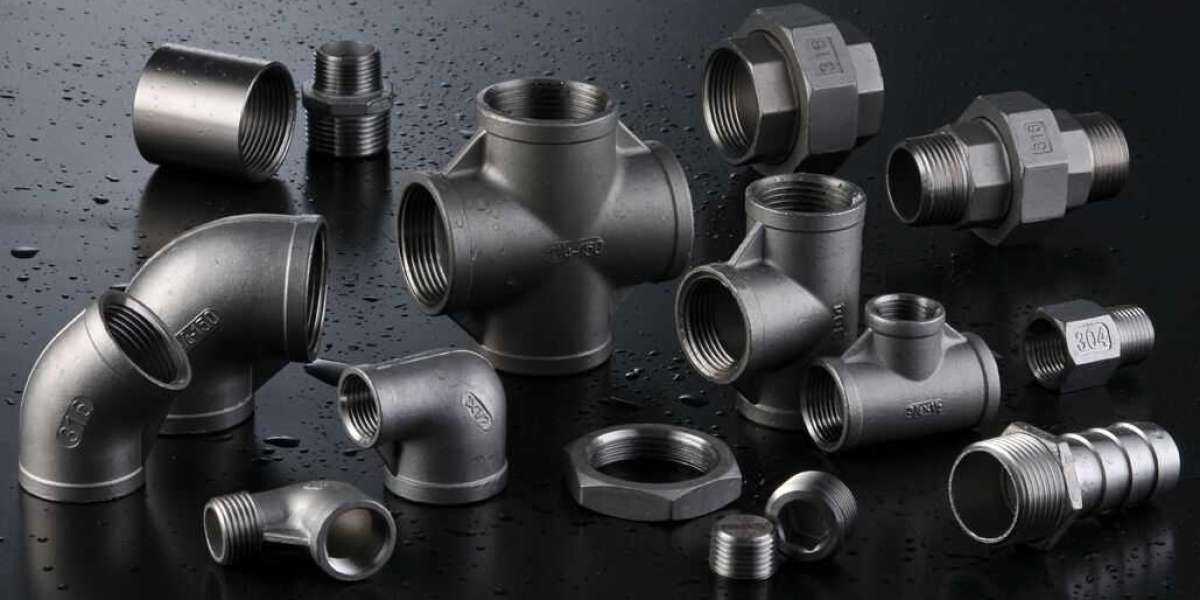Aluminium fittings have become an essential part of modern infrastructure. These components connect, control, or terminate piping systems in a wide range of industries. Whether it's a construction project, an HVAC installation, or a marine application, aluminium pipe fittings are valued for their combination of strength, weight, and corrosion resistance.
In this blog, we’ll cover everything you need to know about aluminium fittings from their advantages and types to their everyday uses and why they’re in such high demand.
What Makes Aluminium Fittings So Popular?
Aluminium is one of the most versatile materials in the world. Its ability to resist corrosion, conduct heat and electricity, and maintain strength while remaining lightweight makes it a go-to material for industrial fittings. Aluminium fittings, in particular, stand out because they reduce structural load and last long even in harsh environments.
Key Advantages of Aluminium Fittings
1. Lightweight But Strong
Aluminium is much lighter than steel or brass, making it ideal for applications where weight is a concern. Despite its low weight, aluminium fittings offer excellent mechanical strength.
2. Corrosion Resistance
Aluminium naturally forms a thin oxide layer that protects it from rust and chemical damage. This property makes aluminium plumbing fittings suitable for use in marine and outdoor applications.
3. Affordable and Available
Compared to stainless steel or copper, aluminium is more budget-friendly and widely available. This makes it a smart choice for bulk industrial projects.
4. Good Conductivity
Aluminium has high thermal and electrical conductivity, which makes its fittings suitable for heating, cooling, and electrical systems.
5. Recyclable and Eco-Friendly
Aluminium is 100% recyclable without losing its properties. Using aluminium fittings supports sustainable construction practices.
Common Types of Aluminium Fittings
Aluminium pipe fittings come in several forms to meet different connection needs:
• Elbows
These fittings change the direction of flow in a pipeline, commonly available in 45°, 90°, and 180° angles.
• Tees
Used to split or merge flow in a pipeline. Aluminium tees are available in equal and reducing versions.
• Reducers
Reducers connect pipes of different diameters and come in concentric and eccentric shapes.
• Couplings
Aluminium couplings connect two similar-diameter pipes and are available in threaded or plain-end designs.
• End Caps
Placed at the end of a pipe to stop flow and seal off the system.
• Flanges
These circular components allow for easy bolting and unbolting of pipes. Flanges are useful in systems that require frequent maintenance.
Where Are Aluminium Fittings Used?
The versatility of aluminium fittings allows them to be used across a wide range of industries:
1. Construction
From water supply lines to HVAC systems, aluminium plumbing fittings are used for their ease of installation and resistance to corrosion.
2. Automobile Industry
Aluminium fittings are essential in vehicles for fuel lines, brake systems, and cooling circuits to keep weight low and efficiency high.
3. Aerospace
The aerospace industry relies heavily on aluminium pipe fittings for hydraulic systems due to their strength-to-weight ratio.
4. Marine Applications
Saltwater corrodes most metals quickly. Aluminium’s natural corrosion resistance makes it ideal for shipbuilding and offshore platforms.
5. Agriculture
Irrigation systems and greenhouse structures use aluminium fittings because they resist chemicals and are easy to assemble.
6. Food Processing
Since aluminium is non-toxic and hygienic, it is safe for food-grade systems and is used in beverage, dairy, and pharmaceutical setups.
How to Choose a Reliable Aluminium Fittings Supplier
When selecting an aluminium fittings manufacturer, it’s important to look beyond just price. Here are a few things to consider:
✅ Product Quality
Ensure that the supplier follows global standards such as ASTM, DIN, or ISO to guarantee the quality of their aluminium fittings.
✅ Alloy Grades
Different grades like 6061, 6063, or 5083 offer different benefits. A good supplier will help you choose the right alloy for your application.
✅ Delivery and Availability
Select a supplier who has a strong logistics network and keeps fittings in stock for faster delivery.
✅ Customization
Some applications require unique sizes or shapes. Choose a manufacturer that offers custom fabrication services.
✅ After-Sales Support
Technical support, documentation, and warranties are critical—especially for large projects or specialized applications.
Maintenance Tips for Aluminium Pipe Fittings
Aluminium fittings are low-maintenance, but a few simple practices can extend their lifespan:
Avoid exposing them to strong acids or bases.
Inspect regularly for mechanical damage or wear.
Use compatible pipe materials to prevent galvanic corrosion.
Clean occasionally with mild soap and water to retain their finish.
Aluminium Fittings vs Other Metal Fittings
| Property | Aluminium Fittings | Stainless Steel Fittings | Brass Fittings |
|---|---|---|---|
| Weight | Very light | Heavy | Moderate |
| Corrosion Resistance | High (with oxide layer) | Very high | High |
| Cost | Affordable | Expensive | Moderate |
| Recyclability | Excellent | Excellent | Excellent |
| Applications | Versatile | Harsh environments | Plumbing, gas fittings |
Conclusion
Aluminium fittings offer an unbeatable combination of durability, affordability, and lightweight strength. They’ve become an integral part of industries like construction, aerospace, marine, and plumbing. Whether you need elbows, tees, couplings, or reducers, aluminium pipe fittings provide dependable performance in a wide variety of conditions.
When purchasing fittings, always choose a trusted aluminium fittings manufacturer or supplier that delivers certified quality and excellent customer support. By doing so, you’ll ensure that your systems remain strong, efficient, and cost-effective for years to come.







